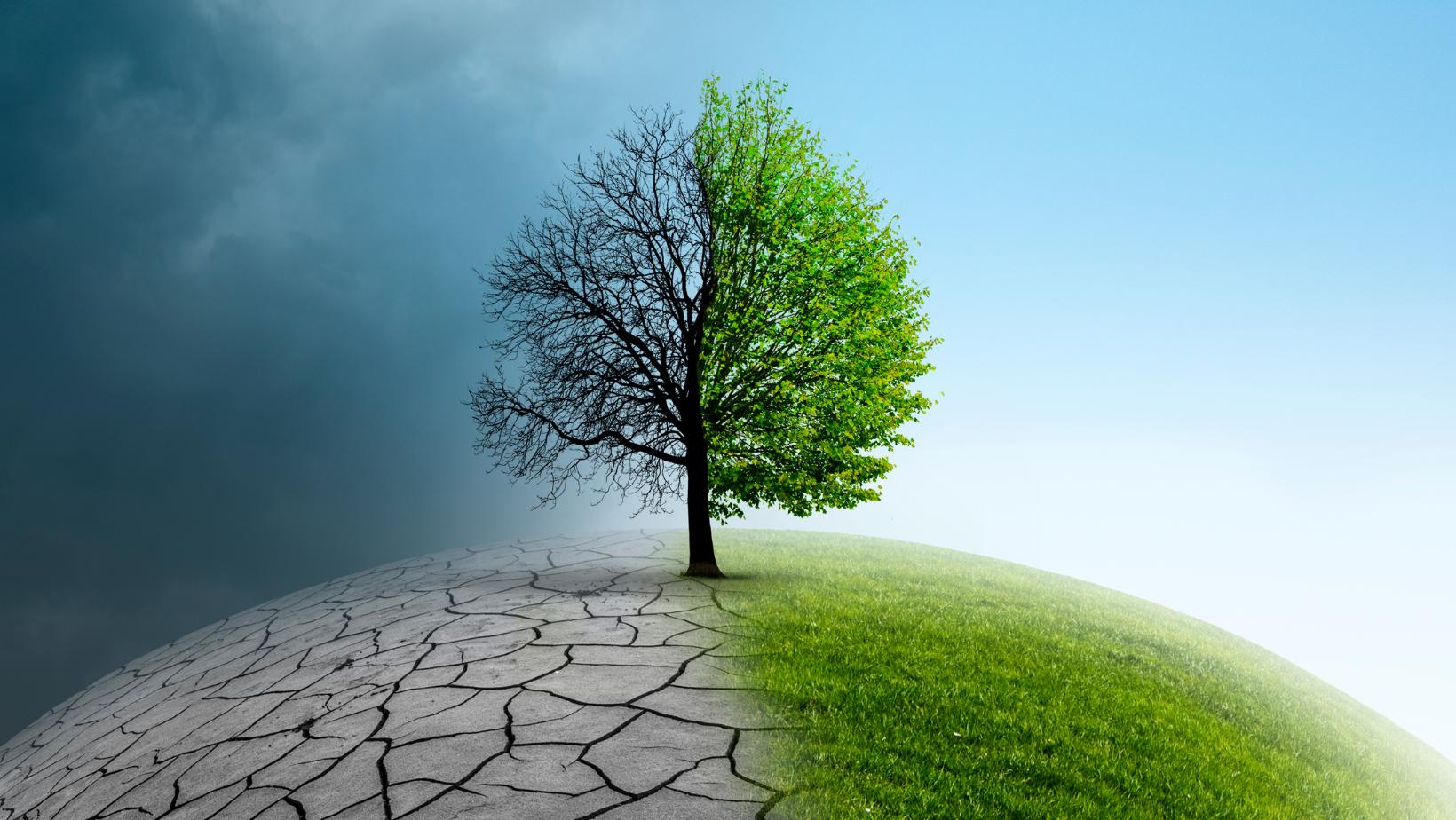Climate change is no longer a distant threat—it’s here, and its effects are being felt across the globe. One of the most profound areas of impact is agriculture, where rising temperatures, unpredictable weather patterns, and shifting ecosystems are disrupting food production. With global populations continuing to grow, the challenge of feeding the world is becoming increasingly complex. Let’s explore how climate change is reshaping global agriculture and food supply chains.

1. Extreme Weather Events are Disrupting Crop Yields
From hurricanes to droughts, extreme weather events are wreaking havoc on agriculture. Crops like wheat, corn, and rice are highly sensitive to fluctuations in temperature and water availability. Droughts can lead to soil degradation, while floods can destroy entire harvests, leading to food shortages and rising prices. For example, the 2022 drought in Europe significantly reduced grain production, underscoring the vulnerability of global food systems to climate shocks.
2. Rising Temperatures Threaten Livestock and Crop Health
Higher global temperatures are stressing both crops and livestock. Many staple crops, such as maize and soybeans, have optimal growing temperature ranges. When these limits are exceeded, yields decline, leading to economic losses for farmers. Livestock, too, suffer from heat stress, which can reduce fertility and milk production. In regions like sub-Saharan Africa, rising temperatures are pushing traditional farming systems to their breaking points.
3. Shifts in Growing Seasons and Geographic Suitability
Climate change is altering growing seasons and the regions suitable for agriculture. Warmer temperatures have extended growing seasons in some northern regions, like Canada and Russia, allowing farmers to cultivate crops previously unsuited for the climate. However, in tropical and subtropical areas, traditional crops are struggling to adapt. This geographic shift is causing disruption in local economies and global trade patterns, further complicating food supply chains.
Advertisement
4. Water Scarcity is Limiting Irrigation and Food Production
Water scarcity is becoming a critical issue as climate change exacerbates droughts and reduces freshwater availability. Agriculture accounts for 70% of global freshwater use, making it particularly vulnerable to water shortages. Regions like the Middle East and North Africa, already water-stressed, are facing severe challenges in sustaining irrigation-dependent crops. As water becomes scarcer, conflicts over access could further threaten global food security.
5. Pests and Diseases are Spreading to New Areas
Changing climates are expanding the range of agricultural pests and diseases. Warmer temperatures and altered rainfall patterns allow invasive species and pathogens to thrive in previously inhospitable regions. For instance, the desert locust swarms that devastated crops in East Africa in 2020 were linked to unusual weather patterns. The spread of pests and diseases reduces crop yields, increases production costs, and endangers global food supplies.
6. Soil Degradation and Erosion are Accelerating
Climate change is exacerbating soil degradation and erosion, critical threats to agricultural productivity. Intense rainfall, prolonged droughts, and rising sea levels contribute to the loss of fertile soil. Coastal regions are particularly at risk, as saltwater intrusion renders farmland unusable. Without healthy soil, crop yields decline, and the ability to sustain long-term agricultural production diminishes.
7. Ocean Warming and Acidification are Impacting Fisheries
The effects of climate change extend beyond land-based agriculture, significantly impacting fisheries and aquaculture. Rising sea temperatures are causing fish populations to migrate toward cooler waters, disrupting fishing communities that rely on these resources. Additionally, ocean acidification, a result of increased carbon dioxide absorption, is threatening shellfish and coral ecosystems. These changes have far-reaching implications for global food supply and economic stability.
Advertisement
8. Food Distribution and Supply Chains are Vulnerable
Climate change doesn’t just affect food production; it also disrupts distribution and supply chains. Extreme weather events can damage infrastructure, delay transportation, and increase food waste. For example, hurricanes in the U.S. have caused widespread destruction to grain silos and transportation networks, limiting the availability of key crops. These disruptions amplify the challenges of ensuring equitable food access worldwide.
9. Inequality in Climate Adaptation is Widening
The impacts of climate change on agriculture are not felt equally across the globe. Wealthier nations have more resources to invest in adaptive technologies, such as drought-resistant crops and advanced irrigation systems. In contrast, developing countries, which often depend heavily on agriculture for their economies, face greater challenges. This inequality exacerbates global food insecurity, with poorer regions bearing the brunt of climate-related disruptions.
10. Innovation and Adaptation Offer Hope
Despite the challenges, innovation in agriculture is providing solutions to combat the effects of climate change. Advances in precision farming, vertical agriculture, and genetic engineering are helping farmers produce more with less. Governments and organizations worldwide are investing in climate-resilient practices, such as agroforestry and sustainable water management. While the road ahead is challenging, these efforts highlight humanity’s ability to adapt and ensure food security.
Final Thoughts
The intersection of climate change and global agriculture is one of the most pressing challenges of our time. As extreme weather events intensify, water becomes scarcer, and ecosystems shift, the ripple effects on food supply chains are profound. Addressing these issues requires global collaboration, innovative solutions, and a commitment to sustainability.
By understanding the impacts of climate change on agriculture, we can work towards a more resilient and equitable food system. The stakes are high, but with concerted effort and innovation, we can ensure that future generations have access to the nourishment they need.
References
- Food and Agriculture Organization of the United Nations. Climate Change and Food Security: Risks and Responses. Accessed January 8, 2025. https://www.fao.org
- NASA Earth Observatory. “Climate Change and Agriculture.” Accessed January 8, 2025. https://earthobservatory.nasa.gov
- World Resources Institute. “The State of Global Agriculture and Food Security.” Accessed January 8, 2025. https://www.wri.org
- Intergovernmental Panel on Climate Change. Special Report on Climate Change and Land. Accessed January 8, 2025. https://www.ipcc.ch


